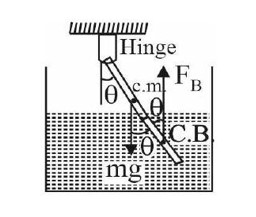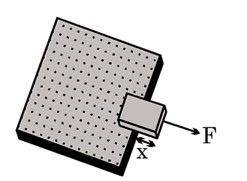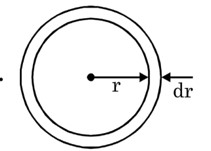Physics Mechanical Properties of Fluids
Get insights from 95 questions on Physics Mechanical Properties of Fluids, answered by students, alumni, and experts. You may also ask and answer any question you like about Physics Mechanical Properties of Fluids
Follow Ask QuestionQuestions
Discussions
Active Users
Followers
New answer posted
2 months agoContributor-Level 10
m = 0.3g density,
Fv + FB = mg.
Þ Fv = mg – FB = .3 * 10-3 * 10 – 1.3 *
= 2.5 * 10-3N
New answer posted
2 months agoContributor-Level 10
Load of mass will be equally distributed among the four colours so force on each columns will be 125 * 103 N.
Cross section area of the column =
Using young's modulus :
New answer posted
2 months agoContributor-Level 10
Q = a√2gh
h = Q²/ (a² * 2g) = (10? )²/ (10? * 2 * 10) = 5 cm
Height above the ground = 3 cm + 5 cm = 8 cm
New answer posted
2 months agoContributor-Level 9
Let length of rod is immersed in water.
net

, where density of material of rod
Buoyant force
Equate
immersed
Taking an Exam? Selecting a College?
Get authentic answers from experts, students and alumni that you won't find anywhere else
Sign Up on ShikshaOn Shiksha, get access to
- 65k Colleges
- 1.2k Exams
- 679k Reviews
- 1800k Answers





